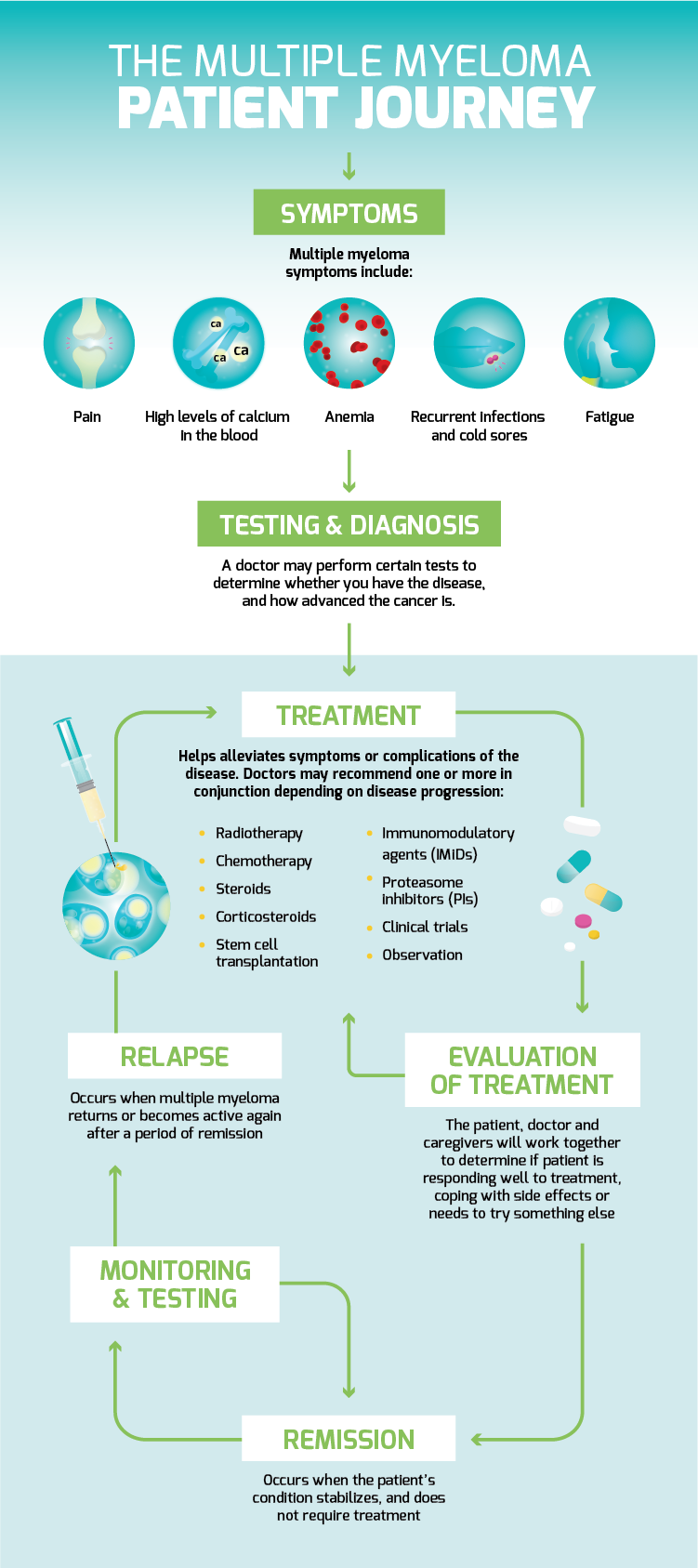Each day, eight Canadians are diagnosed with multiple myeloma, a cancer of the plasma cells found in bone marrow. Although there is currently no cure for the disease, there are now an array of innovative treatment options that allow myeloma patients to live their lives after diagnosis—and the outlook continues to improve.
Multiple myeloma occurs when the DNA of plasma cells—the body’s disease-fighting producers of antibodies—is damaged, and causes the cells to multiply uncontrollably. The proliferation of myeloma cells in the bone marrow interferes with the production of healthy red blood cells, white blood cells and platelets, and can impact several systems and parts of the body.
An Ongoing Process
Each multiple myeloma patient’s treatment journey is unique. For many patients, it begins with exhibiting symptoms of the disease, consultations with doctors, and a battery of tests, ultimately leading to diagnosis and prognosis. From there, physicians assess the test results, and work with the patient to find the treatment options best-suited to addressing the individual’s myeloma.
For some patients, the first line of treatment attempted may prove to be effective. Others may have to try multiple treatment options before finding one that their particular myeloma responds to.
Myeloma is what is known as a “relapsing-remitting” cancer, which means it alternates between periods where symptoms or complications need to be treated; and a stable state that does not require treatment—known as remission. The length of remission experiences can vary dramatically between patients.
If the myeloma returns or becomes active again after a period of treatment, this is called a “relapse.” If a patient relapses, they will typically work with their healthcare providers to find subsequent lines of treatment that the relapsed myeloma responds to. There are some types of treatment that are specifically-engineered for relapsed myeloma.
Some multiple myeloma patients withstand this relapsing-remitting cycle multiple times.
Though multiple myeloma is a serious condition that currently has no cure, many advances have been made to treat the disease over longer and longer periods of time. Work with your healthcare providers to find treatment options that can help manage the disease.



